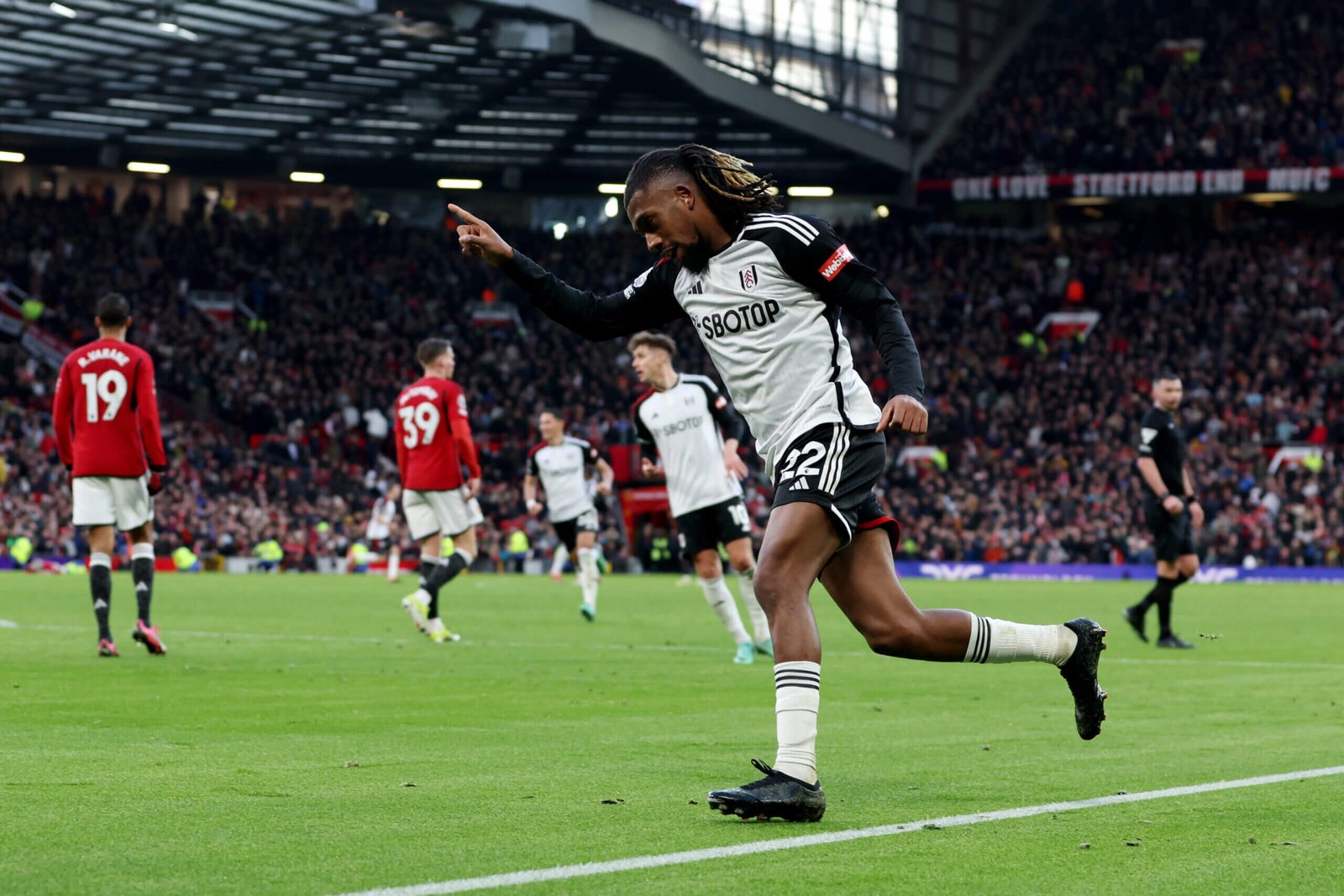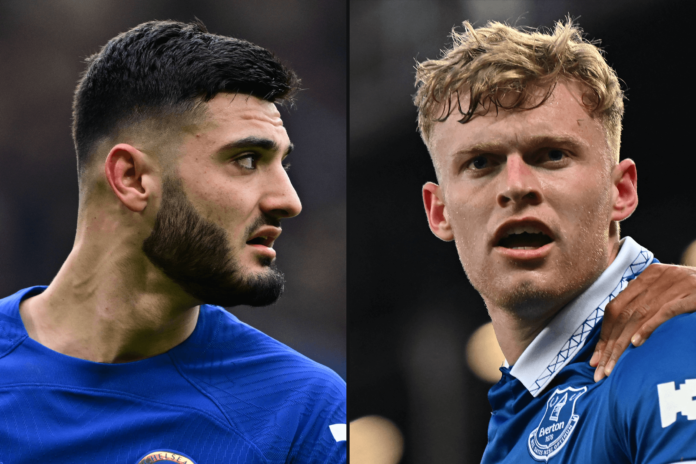The Premier League’s profitability and sustainability regulations (PSR) are dictating the summer, and the defining date is looming large.
Teams have to get their PSR situation in order before June 30. Accounts for the year have to be finalised by Sunday — but clubs can provide mitigation if deals go through just after the deadline. A fair warning, though: that argument did not work for Nottingham Forest last season when they tried to make their case for Brennan Johnson’s transfer to Tottenham Hotspur in September.
Premier League clubs are allowed to lose £105million ($133m) over a three-year accounting period, but at least six clubs have concerns about staying within that threshold.
Aston Villa, Chelsea, Everton, Leicester City, Newcastle United and Nottingham Forest are desperate to push through deals this week.
So how will each club sort out their situation? Here, The Athletic’s experts explain what is happening — and what comes next.
Aston Villa
What is the PSR state of play?
Over the past 18 months, all roads have led to this summer for Villa. There has been an inescapable feeling they would have to sell a key player, with Douglas Luiz likely to join Juventus. The need became more pressing following Villa’s latest set of accounts — they reported a post-tax loss of £119.6million in the year ending May 31, 2023, a sharp decline from the marginal profit of £300,000 12 months earlier.
Douglas Luiz is set to move to Juventus (Naomi Baker/Getty Images)
Villa’s wages-to-turnover ratio — the percentage of money spent on employees’ salaries — stood at 89 per cent in 2022 and 2023 and was the fourth-highest in the Premier League. The three teams who were higher were Leicester, Nottingham Forest and Everton, all of whom have breached PSR rules and are in varying processes of being sanctioned.
It stings Villa’s senior figures that a big sale is needed to sign the calibre of players befitting a first Champions League campaign. Last month, Villa’s proposal to raise the maximum permitted losses from £105million to £135m over three years was rejected at the Premier League’s annual general meeting.
Only one club was in favour of Villa’s idea, while three abstained. Villa view PSR sanctions as restrictive, impeding upwardly mobile clubs from regularly competing among the elite.
How are they planning to deal with this?
By selling one or two key players on high wages before June 30, while simultaneously looking at which interested clubs could do cross-player transactions.
Juventus have agreed a deal to sign Douglas Luiz for around €50million (£42.3m; $53.5m) and recoup €22m by selling fellow midfielders Samuel Iling-Junior and Enzo Barrenechea to Villa.
Midfielder Tim Iroegbunam completed a move to Everton on Saturday, with forward Lewis Dobbin moving in the opposite direction in a separate deal yesterday.
A £37.5million deal for Ian Maatsen could see a Villa player, likely to be attacking midfielder Omari Kellyman, move to Chelsea. A similar transaction could coincide with Conor Gallagher.
Will PSR have an impact on this summer’s transfer business?
Villa have needed to be extremely creative with incomings, bringing in players through cross-player transactions, for low fees — an agreement for Luton Town’s Ross Barkley is expected to be finalised in the coming weeks — but also through amortisation.
Signing players is not really the issue for Villa — they are financially able and can spread out the payments through the length of a player’s contract, but they are increasingly mindful of balancing the books for PSR.
Jacob Tanswell
Chelsea
What is the PSR state of play at Chelsea?
Chelsea’s situation has come under scrutiny in recent months, especially following the release of their last financial accounts for the year ending June 30, 2023.
The club reported a pre-tax loss of £90.1million. That figure would have been much worse had they not sold two hotels to a sister company.
So there has been a lot of talk from football financial experts about Chelsea’s need to sell players before June 30 to stay on the right side of PSR for 2023-24. A figure of £100million has been mentioned.
Chelsea have downplayed such concerns and are confident the accounts are fine. However, they did not make any signings in January — a sign of how seriously the situation is being taken. It is the first window the Todd Boehly-Clearlake consortium has not brought in a player.
How are they planning to deal with this?
Chelsea were always planning to sell players this summer regardless — partly to improve their financial situation but also to ensure new head coach Enzo Maresca has a settled squad for pre-season.
Significant money is guaranteed on the books because Mason Mount’s transfer to Manchester United last summer (worth an initial £55million) is among the outgoings that count for 2023-24. Lewis Hall’s £28million switch to Newcastle will be made permanent after an initial loan. Add-ons from loan deals have provided up to £14million, too, with money generated from Kepa Arrizablaga, Armando Broja and Maatsen’s moves last season, as well as from Eden Hazard’s sale to Real Madrid in 2019.

Maatsen’s move to Villa will help Chelsea’s PSR situation (Ina Fassbender/AFP via Getty Images)
Academy players are being lined up for sale because they count as pure profit on the books. That process began with Chelsea agreeing a £37.5million fee with Villa for Maatsen. They will also try to get big earners, such as Romelu Lukaku and Arrizablaga, off the wage bill. The cost of salaries has been significantly slashed from the £404million figure of 2022-23.
Will PSR have an impact on this summer’s transfer business?
There will not be as many players arriving as in the first three windows — but Chelsea still want to make key acquisitions.
They have announced a deal worth €57million for Palmeiras winger Estevao Willian, who will join next summer.
Another indication of their ambition was their attempt to sign Michael Olise from Crystal Palace, although they were priced out of a move. The club will continue to look at other players who operate on the wing.
Buying a striker is priority and other positions will be looked at depending on how much is raised from sales.
Chelsea will continue to scour the globe for the best youngsters. They see the 18-year-old Kellyman, who is joining from Villa for £19million, as an example of this policy. The club are also in talks with Boca Juniors over defender Aaron Anselmino.
But just to show Chelsea are looking for bargains in the senior squad, defender Tosin Adarabioyo has been acquired as a free agent from Fulham.
Simon Johnson
Everton
What is the PSR state of play at Everton?
Mindful of not infringing for a third time, the expectation was that Everton would make sales before the June 30 deadline.
The word from Goodison Park was that their PSR hole was smaller than in previous years, and that it would not lead to them accepting low-ball offers for key men Jarrad Branthwaite and Amadou Onana, who have attracted significant interest. They have been true to their word. Manchester United’s initial £35m bid for the former was emphatically dismissed, with Everton valuing the defender around twice as high.
Included in this season’s accounts are the sales of Alex Iwobi, Demarai Gray and Tom Cannon — all for significant profit. In the cases of Gray and Cannon, their book values were almost negligible.

The sale of Iwobi to Fulham has been included in the latest set of accounts (Clive Brunskill/Getty Images)
Without those deals, Everton would almost certainly have faced more pressure to cash in on a top asset.
A word of caution — we are still waiting for an outcome on the dispute between the club and the Premier League over whether interest can be taken out of Everton’s PSR calculations. Should they lose that battle, there would be greater gaps to plug.
How are they planning to deal with this?
Rather than forcing the quick sale of Branthwaite or Onana for below market value, Everton’s approach has been to prioritise the sale of academy graduates or those on the fringes of manager Sean Dyche’s setup.
They are working with other clubs facing similar issues, including Villa, with the deals for Dobbin and Iroegbunam the logical product of that process.
That business strengthens their PSR position and means they can, at the very least, hold out for top money when clubs come in for Branthwaite and Onana. Everton are still likely to listen to offers for the duo but they have lofty valuations.
Will PSR have an impact on this summer’s transfer business?
Everton will view this summer window in two distinct chunks: before and after June 30.
The aim before the end of the financial year was to resolve any lingering PSR issues but the period immediately after that deadline is expected to be less frantic.
Business done after June 30 will be included in next season’s accounts, so Everton still need to be careful. They posted a significant loss for the 2022-23 season, the first of that new three-year rolling cycle.
There is another element here that is equally important. With the club looking for new owners, cash flow remains a consideration and transfer business will need to be prudent.
Even where money is spent, expect Everton to continue structuring deals with minimal upfront costs.
Patrick Boyland
Leicester City
What is the PSR state of play at Leicester?
The Premier League charged Leicester in March over a suspected breach of PSR for the 2022-23 season. Leicester are waiting on news of when the independent panel hearing will take place.
Leicester have posted losses of £215.2 million for the three-year cycle, £110million more than the Premier League’s limit of £105million, before add-backs (which include expenditure on women’s football and infrastructure).
The Premier League has charged the club for failing to submit their 2022-23 accounts to them last season. Leicester attempted to argue they were an EFL club then, so were only obliged to submit them to the EFL.
The EFL has been pursuing Leicester for a suspected breach during their season in the Championship and failed with attempts to enforce a business plan on the club and to have a Premier League hearing for the 2022-23 accounts fast-tracked.
Leicester could face a second charge for a breach as the single year in the Championship means they can only record losses of £83million for the next three-year cycle.
How are they planning to deal with this?
Leicester have moved their accountancy period to conclude at the end of June, allowing them to incorporate extra player sales.
James Maddison’s £40million sale was included in the last accounts. While Leicester posted a player trading profit of £75m, which included Wesley Fofana’s £70m sale to Chelsea the previous summer, they still posted huge losses.

Maddison’s move to Tottenham is in the latest accounts (Michael Regan/Getty Images)
The club admitted they may be in breach. Over the last two summers, 10 high-earning players have left as free agents. Maddison and Harvey Barnes have been sold. The wage bill will be reduced dramatically, but the damage may have been done.
Will PSR have an impact on this summer’s transfer business?
It already has. Although Leicester will push ahead with a pre-agreed deal to sign Abdul Fatawu for £14million, the budget for new manager Steve Cooper is limited. Leicester will look to move some players on if they can, but Cooper will be given time to assess which ones, and players who were surplus under Maresca may get a second chance.
However, they may decide to hang on to key assets, such as Kiernan Dewsbury-Hall, if it would not avoid a second breach.
Rob Tanner
Newcastle United
What is the PSR state of play at Newcastle?
There is a shortfall, the value of which is unclear given the opaque nature of PSR.
Saudi Arabia’s uber-wealthy Public Investment Fund (PIF) owns 80 per cent of Newcastle but PSR is slowing the pace at which its decision-makers can achieve their ambitions.
During the first four post-takeover windows, Newcastle’s expenditure exceeded £400m but they recouped under £50m from sales. Despite rapid revenue growth of 39 per cent year on year, Newcastle’s income levels have been rising from such a low base that they still suffered cumulative losses of £144.1m over the 2021-22 and 2022-23 campaigns.
In January, Newcastle’s PSR position prevented Eddie Howe from signing anyone, despite an acute injury crisis. Instead, the window was dominated by talk of potential exits, with Bayern Munich bidding for Kieran Trippier and Miguel Almiron floated to Saudi Pro League clubs.
While admitting every player has a price in a PSR world, Darren Eales, Newcastle’s CEO, was adamant in January that the club would not be in breach. “Our plans are always to be compliant,” Eales said.
How are they planning to deal with this?
Newcastle have been attempting to expand their revenue streams swiftly, with commercial growth crucial.
Even so, to comply with PSR, Newcastle need to sell players this week.
Senior players Callum Wilson, Almiron and Trippier face uncertain futures but even if selling academy graduates, such as Sean Longstaff, represents pure profit in accounting terms, time is short for Newcastle. Any such deals may prove unachievable before Sunday.
Instead, Yankuba Minteh, the exciting 19-year-old, is the player Newcastle have identified as being able to offload for a decent return by then.

Selling Longstaff would help Newcastle’s PSR situation (Gareth Copley/Getty Images)
Suggestions of a £40m price tag appear extremely ambitious, but Newcastle believe they are close to a sale for £25m or more. Minteh has agreed personal terms with an unspecified club and is open to moving, even if he wants to play Premier League football long-term.
Other sales may take place by July 1 — and could even be necessary as the exact financial shortfall is unclear, though the indication is the Minteh deal should suffice.
Will PSR have an impact on this summer’s transfer business?
Only in the sense that PSR will continue to affect Newcastle’s business. Yet the new financial year brings fresh capacity to invest, especially with the lucrative Adidas kit deal kicking in.
Newcastle have committed to signing Hall from Chelsea permanently for £28m. Signing free agents, such as Lloyd Kelly, will help their PSR-permitted budget stretch further.
That is important, given they want a right winger, a goalkeeper, and possibly a striker and another defender. They are in talks with Burnley for goalkeeper James Trafford and Everton for striker Dominic Calvert-Lewin. They had a cash-plus-player bid rejected for Wolverhampton Wanderers’ Max Kilman.
However, Newcastle are adamant they do not need to sell Bruno Guimaraes or Alexander Isak, their prized assets.
Chris Waugh
Nottingham Forest
What is the PSR state of play at Nottingham Forest?
Another summer, another PSR riddle to solve. Twelve months after they failed to sell Johnson before the June 30 cut-off point, resulting in a £34.5million breach and a four-point deduction, Nottingham Forest are back in a hole of their making.
Even allowing for the increased losses they can submit, up from £61million to £83million after a second season in the Premier League, Forest have overspent.
Johnson’s sale to Tottenham for £47.5million will be included in the 2023-24 accounts but wages and player amortisation fees have climbed significantly after further investment in the squad.
Forest booked sizeable losses for 2021-22 and 2022-23 and struggled to redress the imbalance last season. There is a real danger Forest will breach PSR for a second consecutive season.
How are they planning to deal with this?
The shortfall in the accounts needs to be plugged and, just like last summer, that means selling an asset. Forest are under pressure to record a trading profit of between £20million and £25m by Sunday.
The preference would be to offload fringe players, including Joe Worrall, Lewis O’Brien, Emmanuel Dennis and Matt Turner, but the remedy might end up being a bigger sale.

Awoniyi would be a departure Forest could profit from (Michael Regan/Getty Images)
Brazilian defender Murillo is the most likely candidate and is known to have his admirers. Taiwo Awoniyi or Morgan Gibbs-White could be sold, too. Whether Forest will see their valuations met, however, is another matter. They need to bring in revenue — and fast.
Will PSR have an impact on this summer’s transfer business?
A summer clear-out has made room in the squad. An unsustainable wage bill has been trimmed with the exit of some high-earners, such as defender Felipe, while loan deals for Giovanni Reyna, Divock Origi and Nuno Tavares will not be turned into permanent moves.
That has created room for manoeuvre this summer, with goalkeeper Carlos Miguel lined up to join, but Forest’s recruitment will need greater pragmatism if they are to find a stronger financial footing in the long term.
Philip Buckingham
Read the full article here


